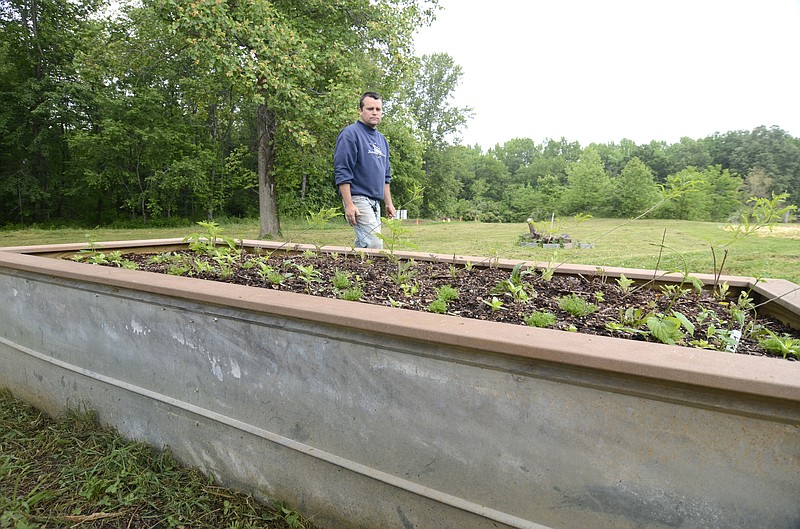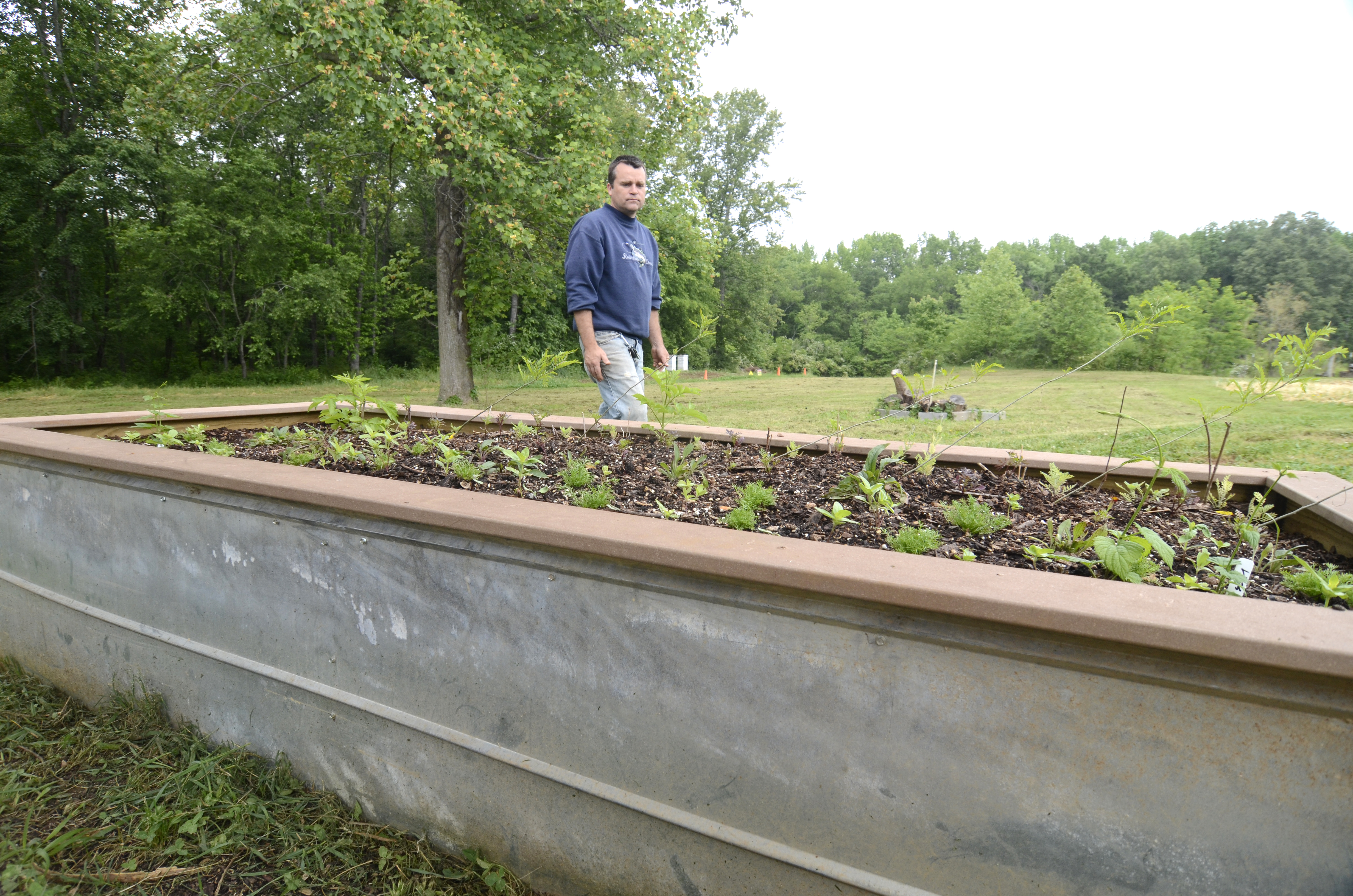BUILDING A PLANT BED• Use a rot-resistant material such as stone, concrete blocks, cedar, redwood, woods treated with boric acid or composite board.• Use corrosion-resistant nails and screws.• Overbuild because you can't move it once it's built.• Beds usually are open on the bottom unless there is concern about the native soil.• Beds with a bottom should be at least 2 feet deep, while an open-bottomed bed generally is 11 inches deep.• Use a 50-50 mixture of topsoil and compost.
Clifford Ackerson recently built his first set of raised garden beds.
"It's not difficult," said Ackerson, a civil engineer. "You just have to stay with it."
Ackerson and his wife had tried planting in their 25-square-foot yard on Belvoir Avenue but found themselves overwhelmed by weeds.
"It just became a plot of Bermuda grass," he said. "The raised beds were our best shot because it gets us up out of the weeds."
With encouragement from his sister, he took a gardening class and learned to build a raised bed. They built seven, using treated wood. Next step, he said, was filling and planting the beds.
Building a raised bed is a fairly easy process, said Joel Houser, farm manager at Crabtree Farms. Although there are different ways to build, there are some basic principles that always apply.
To begin, get a rot-resistant material. Houser said stone, concrete blocks, cedar wood or woods treated with boric acid won't rot.
When Lisa Lemza, organizer of Grace Episcopal Church's Brainerd By Grace Community Garden, facilitated the building of raised beds recently, she used composite boards.
"We didn't want to fool with the maintenance issues of treated or untreated lumber. Some people are afraid of chemical contamination."
The risk was extremely low, she said, but the choice of material made some people more comfortable.
Houser also said choosing corrosion-resistant nails and screws is important as well. Creating a strong frame will help to maintain the bed's integrity.
"My recommendation is always to overbuild it because you can't move it once it's built," he said.
Raised beds are generally open on the bottom unless there is concern about the native soil. A soil test is recommended before beginning the building process.
"The beauty of a raised bed is that you have all this nice, new soil on top, and then it's open to the native soil on the bottom, and you can mine minerals of the native soil," Houser said.
Raised beds built with a bottom should be at least 2 feet deep, while an open-bottomed bed is generally 11 inches deep.
The most important step, Houser said, is filling the bed with a 50-50 mixture of topsoil and compost.
Raised beds are more accessible to people with limited mobility. Using a raised bed can help minimize weed problems.
"We have quite an array of gardening experience, and it is absolutely the easiest way to garden," said Lemza. "You can turn over the beds rapidly without extensive soil checks, and the weed issues are virtually nonexistent."
The only drawback, she said, is the limited space. Enthusiastic gardeners tend to overplant.

